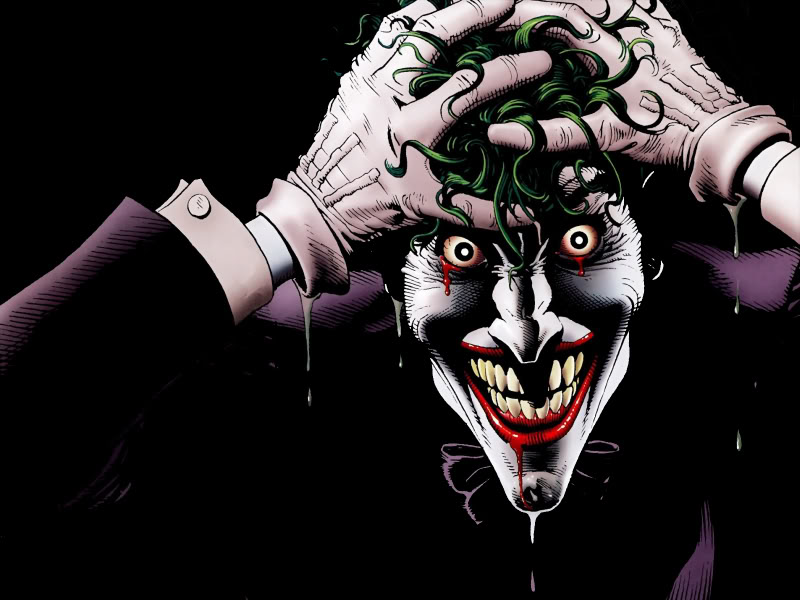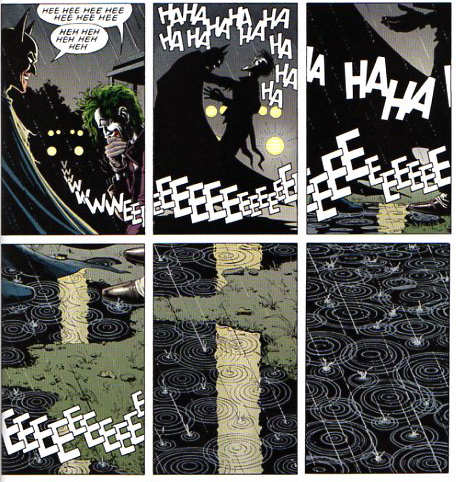This week on Most Heroic, we’ll be examining an important moment in one of the best stories in comic book history.
 Whenever people make the assertion that comic books aren’t just for children, they often cite some of the more mature and critically-acclaimed stories to show how complex the medium can be. There’s plenty of great examples out there to choose from, but over the decades, there’s been a small grouping of universally-beloved stories to make a short list of the best “comic books for adults.” No matter who you ask, Alan Moore and Brian Bolland’s Batman: The Killing Joke will always be one of those stories on the short list.
Whenever people make the assertion that comic books aren’t just for children, they often cite some of the more mature and critically-acclaimed stories to show how complex the medium can be. There’s plenty of great examples out there to choose from, but over the decades, there’s been a small grouping of universally-beloved stories to make a short list of the best “comic books for adults.” No matter who you ask, Alan Moore and Brian Bolland’s Batman: The Killing Joke will always be one of those stories on the short list.
For those scarce few who are unfamiliar with the seminal graphic novel, I’ll give you a brief summary.
The Joker once again escapes from Arkham Asylum, but this time he’s got something particularly sinister – even for him – in mind for the people of Gotham. In his own words, Joker sets out to prove that “all it takes is one bad day to reduce the sanest man alive to lunacy.” His target for this heinous philosophical statement is none other than Police Commissioner Gordon, one of the most honorable men that Gotham City ever knew. How does Joker plan on doing this? By committing some of his most infamous acts in his character’s nearly seventy-year history.
 Joker arrives at the Gordon home, and when Barbara Gordon opens the door, he shoots her at point-blank range. His men subdue Commissioner Gordon and take him to their hideout while Joker then removes all Barbara’s clothes and takes photographs of her lying naked in a pool of her own blood so that he can torture her father. Joker hopes that this will drive Gordon past the point of no return. However, as traumatic as the experience is, it doesn’t work. When Batman arrives to rescue him, Gordon still insists on Batman bringing Joker in “by the book.” Joker failed to break him.
Joker arrives at the Gordon home, and when Barbara Gordon opens the door, he shoots her at point-blank range. His men subdue Commissioner Gordon and take him to their hideout while Joker then removes all Barbara’s clothes and takes photographs of her lying naked in a pool of her own blood so that he can torture her father. Joker hopes that this will drive Gordon past the point of no return. However, as traumatic as the experience is, it doesn’t work. When Batman arrives to rescue him, Gordon still insists on Batman bringing Joker in “by the book.” Joker failed to break him.
Batman defeats the Joker yet again, but this time with a twist. Despite what Joker just put the Gordons through, Batman is willing to help his old adversary. He claims that they both know that if their conflict continues, they’ll end up killing each other. Instead of that grisly end, Batman offers to help rehabilitate the Joker, which would effectively end their personal war with one another. Joker seems to appreciate the thought, but he ruefully claims that it’s much too late for him. He then tells his old adversary a joke, and the two of them share a laugh for the first time. As the police cars arrive on scene, the story ends in a very ambiguous note. As they’re both in the throws of laughter, Batman reaches out and grabs the Joker. But the reader doesn’t get to really know what happens after that. The images shift to the raindrops at their footsteps.
Here’s the famous final page of the story.
The Killing Joke is righteously called the greatest Joker story ever written. It’s such a well-regarded story that Christopher Nolan and Heath Ledger drew a great deal of inspiration from the book for The Dark Knight. Interestingly, this one-shot story became DC continuity. Barbara’s injury from the Joker’s bullet caused her to live as a paraplegic for years. It was only due to the New 52 reboot that she became Batgirl again, in the hands of the wonderful Gail Simone. (I’ll have to write about Simone’s run on Batgirl sometime in the future. It’s really excellent stuff.)
Although the book has received near-universal praise, the story has received some rare criticism for its very subtle and ambiguous ending. Brian Bolland, the original artist of the story actually “revealed” the ending in the afterword of the Deluxe Edition of the story. He said this exactly “As our protagonists stood there in the rain laughing at the final joke, the police lights reflecting in the pools of filthy water underfoot, the Batman’s hand reached out and….”
Recently Grant Morrison, a legendary comic book scribe in his own right, sat down with Kevin Smith for Smith’s Batman-themed podcast, “Fatman on Batman.” During the course of their conversation, they talked about great Batman stories, and they eventually came to The Killing Joke. Morrison then said that “Nobody gets the ending of that story, because Batman kills The Joker…. That’s why it’s called The Killing Joke. The Joker tells the ‘Killing Joke’ at the end, Batman reaches out and breaks his neck, and that’s why the laughter stops and the light goes out, ’cause that was the last chance at crossing that bridge. And Alan Moore wrote the ultimate Batman/Joker story — he finished it. But he did it in such a way that it’s ambiguous, so people will never have to be sure, which means it doesn’t have to be the last Batman/Joker story. It’s brilliant!”
[fresh_video url=”http://www.youtube.com/watch?v=DzlekMIf7D4″]
Since the event is part of DC’s continuity, and the Joker is still alive in this continuity, it is kind of impossible that Batman killed the Joker, but on the other hand it isn’t so far-fetched. Morrison is absolutely right about the ambiguity. The beauty of this ending is that it could be both at the same time.
This is a rare instance of having your cake and eating it too. If you think that Batman would never cross the line and kill one of his enemies, then he didn’t. If you think that this is the inevitable ending of the Batman/Joker feud, then Batman did kill the Joker. It all depends on your own interpretation. It can be either the last story of Batman and the Joker, or another one of their many encounters and an essential part of their history. And to be quite honest, I wouldn’t have it any other way. It’s one of the many reasons that I all but worship Alan Moore.









Glad to see you spreading the word sir, great work.